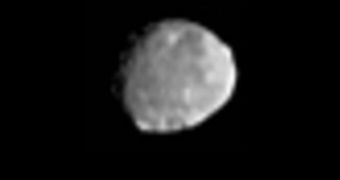One of the most debated mysteries surrounding the large asteroid/protoplanet Vesta is whether the celestial body has a moon or not. As Dawn gets ready to enter orbit around the space rock, the issue is about to be resolved, scientists on both sides of the fence believe.
There are many things that experts hope the NASA Dawn spacecraft will shed some light on when it comes to Vesta. For starters, it may be nice to know what type of object this is. While it may look like an asteroid, it could in fact be a protoplanet.
This is a class of objects that could have become fully-fledged rocky planets – such as Mercury, Venus, Earth and Mars – but somehow failed to develop up to this point. Dawn may finally clear up the mystery as to why that happened.
But the probe may also reveal a hidden moon, that past observations failed to discover. Experts give the example of the asteroid Ida, which the NASA Galileo mission determined to have a small moon.
Dawn will begin its in-depth investigations of the enormous asteroid in early August. It will enter orbit around Vesta on July 16, and will spend the next weeks conducting calibration and commissioning experiments, Space reports.
“When another large body collides with an asteroid, the resulting debris is sprayed into orbit around the asteroid and can gradually collapse to form a moon,” Dawn chief engineer Marc Rayman explained.
The asteroid is more than 330 miles (531 kilometers) across, which means that it has enough gravitational pull to hold one or more moons in orbit. Ida is only 19 miles (31 kilometers) in diameter, and is perfectly capable of holding another celestial body in orbit.
“If a moon is there, it will appear as a dot that moves around Vesta in successive images as opposed to remaining fixed, like background stars,” Dawn team member Mark Sykes says.
“We'll be able to use short exposures to detect moons as small as 27 meters [89 feet] in diameter. If our longer exposures aren't washed out by the glare of nearby Vesta, we'll be able to detect moons only a few meters in diameter,” Sykes goes on to say.
Some are even contemplating naming a prospective moon Dawn, after the spacecraft that could discover it. This is definitely a possibility, experts say, since it's only appropriate to do so.
After spending about a year around Vesta, Dawn will leave the asteroid, and set on a course for the dwarf planet Ceres. Both bodies are found in the Inner Asteroid Belt, between the orbits of Jupiter and Mars.

 14 DAY TRIAL //
14 DAY TRIAL //